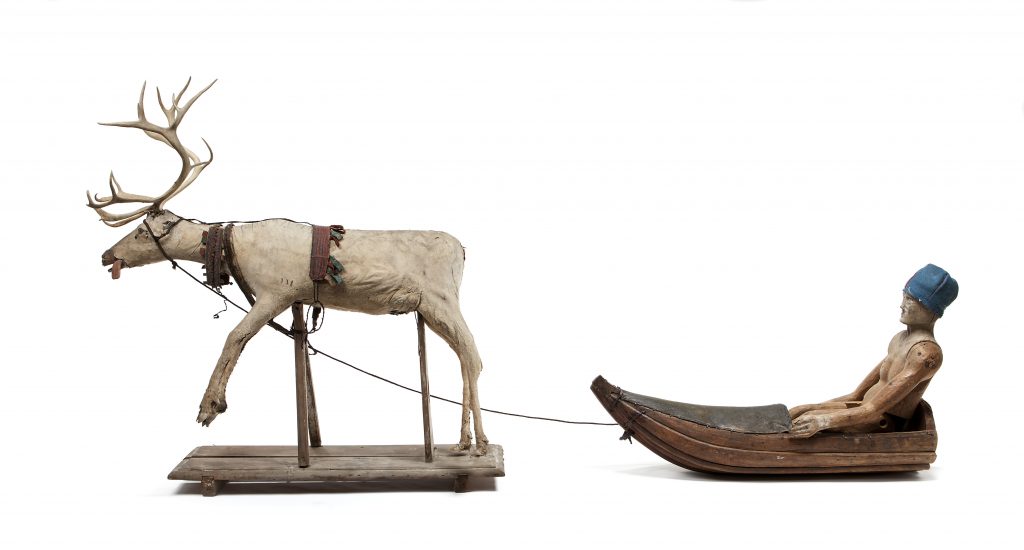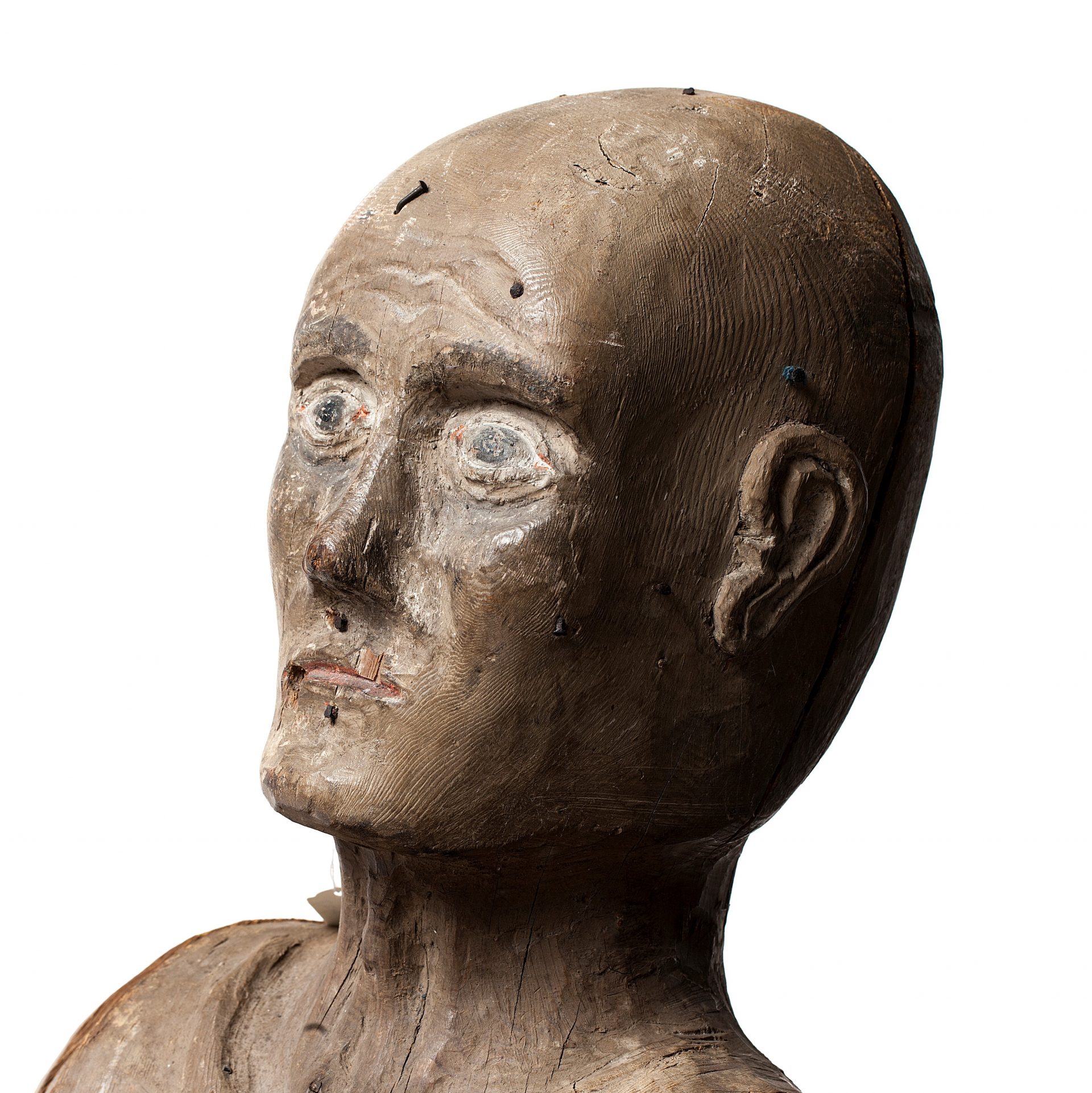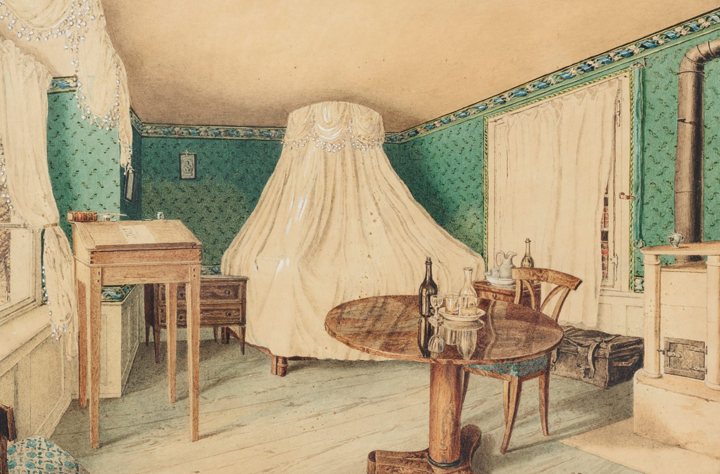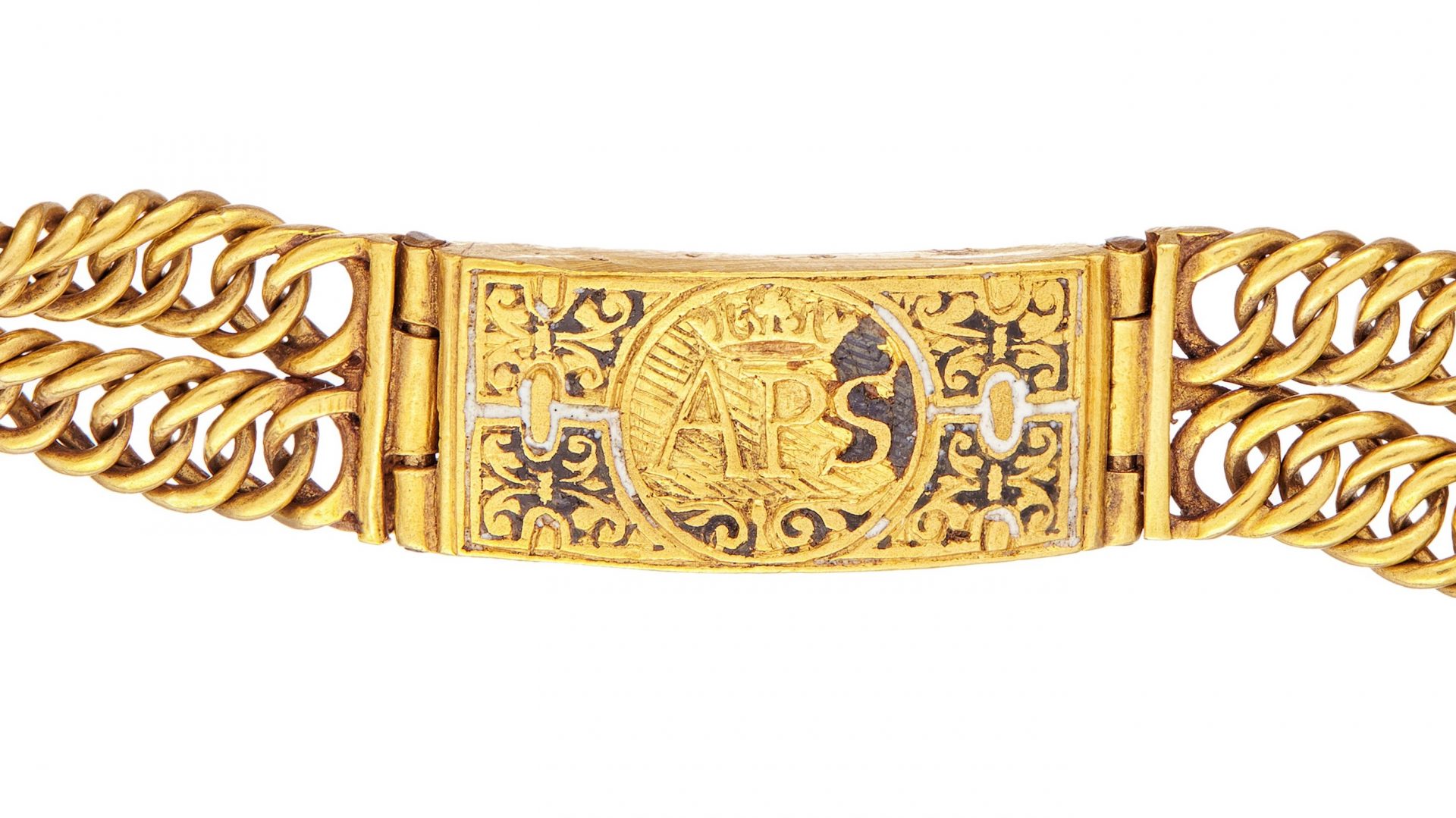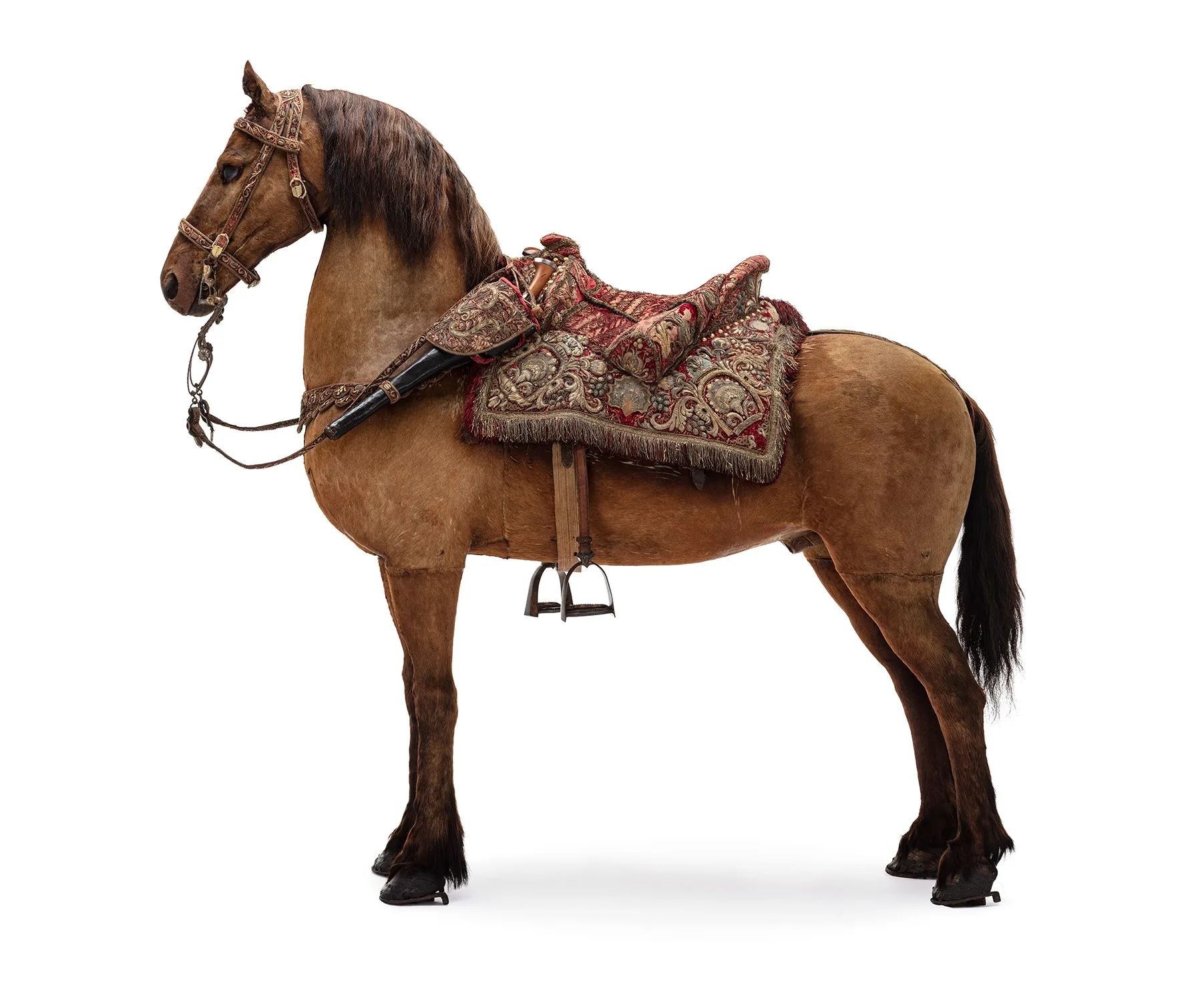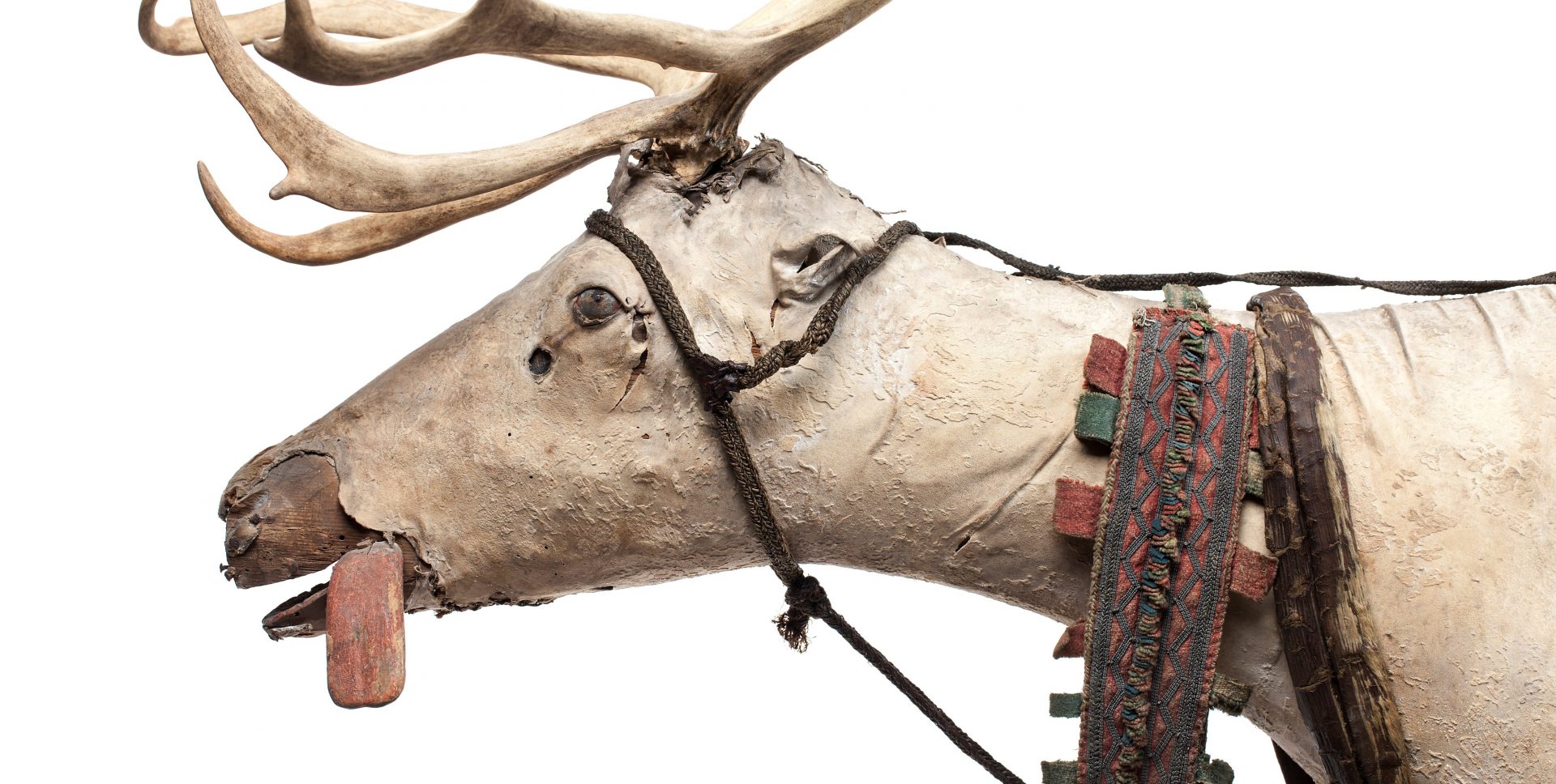
The Governor's Gift
This distinctive gift was delivered to King Karl XI from the Governor of Västerbotten County, Count Gustaf Douglas (1648–1705). The bell around his neck has long since disappeared. Lost or removed. But most of the Sámi equipage remains. And, yes, the Sámi driving the equipage was not a real-life Sámi, but a model.
In 1694, the King had made an inspection trip to Torneå, where he had met the County Governor. It is reported that they viewed the midnight sun together from the bell tower of Torneå Church on the night of 15 June 1694. It is likely that the gift was presented in connection with this trip. Upon arrival in Stockholm, the equipage was placed in the Royal Armoury in Makalös, the De la Gardie palace.
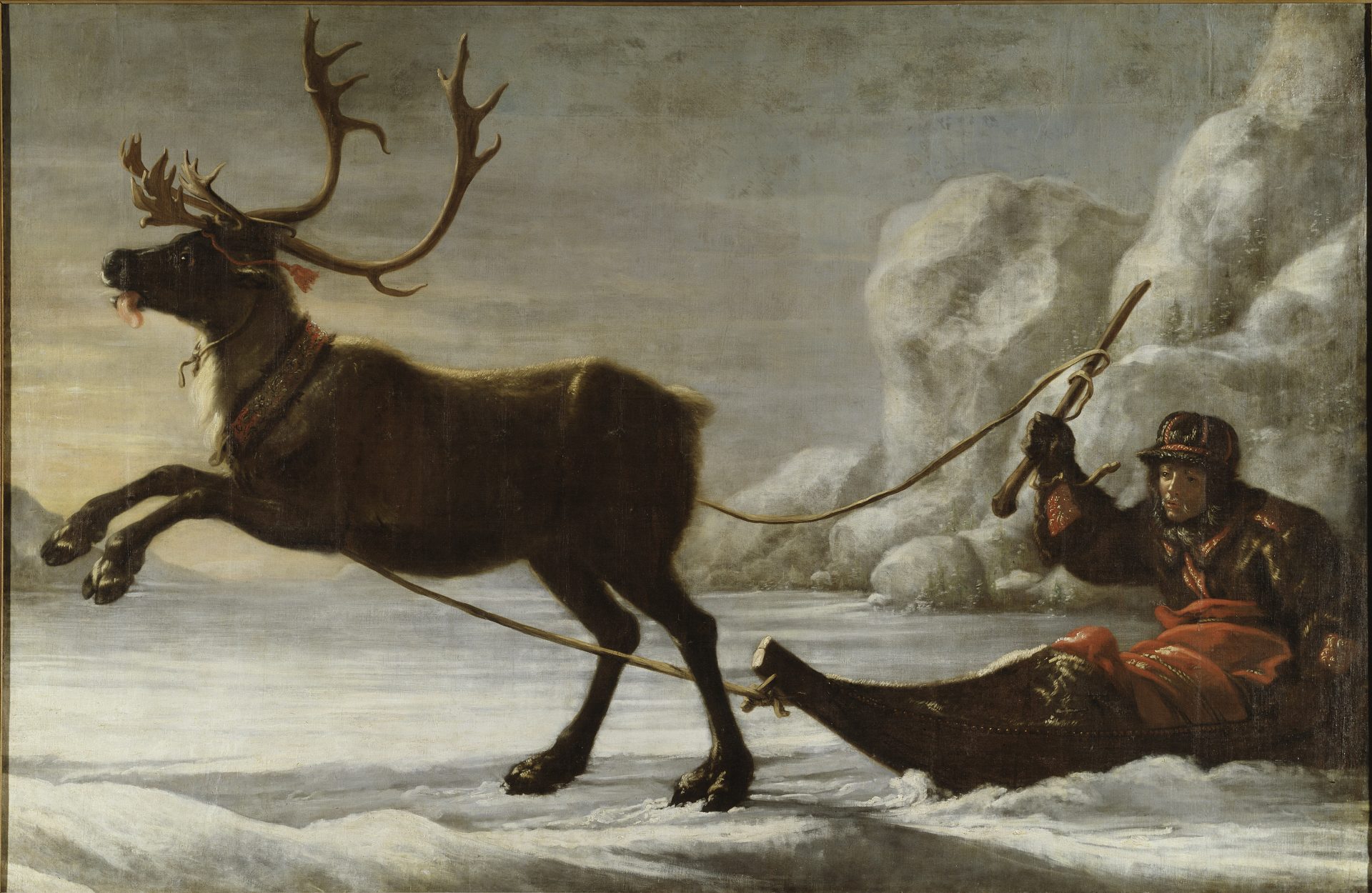
A newly awakened interest
The northernmost parts of Sweden had attracted the interest of the State during the first half of the 17th century. Silver, for example, had been found at Nasafjäll in 1634, and the vast expanses promised ore deposits.
Another reason for this fascination with the Sámi was Johannes Schefferu’s groundbreaking ethnological depiction of Lapland in 1673 in the book “Lapponia”. The book was written in Latin and translated into French, German, Dutch and English, but not into Swedish.
We cannot know if Gustaf Douglas bought the Sámi equipage or had it created for the King. Sámi craftsmanship was already a commodity in the 17th century, and much sought after among wealthy collectors, especially the Sámi drums, which were referred to at the time as magic drums.
What remains
Since arriving at the Royal Armoury towards the end of the 17th century, the artefacts have been moved between several different storerooms, including Fredrikshov Castle and the Palace of the Hereditary Prince. In 1884, the Royal Armoury’s collections were moved to the Royal Palace. There they were put on display until 1906, when they were moved once more and displayed at the Nordic Museum. In 1978, the collections were moved back to the Royal Palace. It is therefore hardly surprising that some of the equipment has been lost or is in very poor condition.
